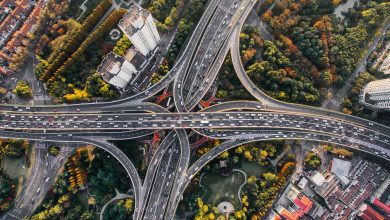Fuel Saving Tips Every Smart Driver Must Know
As the prices of fuel are increasing, fuel efficiency is getting more and more important. As most of you know, achieving the fuel efficiency figures that the manufacturers state in their brochures is next to impossible. However, there are ways you can save on fuel. These fuel saving tips include adjusting your driving style, as well as some other tricks.
Here’s our curated list of fuel-saving tips:
1. Accelerate sensibly
Cars spend a lot of fuel while accelerating, so a steady acceleration is sure to use up less fuel than an abrupt one.
2. Brake sensibly
Yes, hard braking can also increase consumption. You can’t avoid braking in traffic, but keeping the distance and braking slowly makes the ride smoother and saves fuel.
3. Don’t drive really fast
As the speed increases, your car is at higher revs and the wind resistance plays a more important role. Both of these factors increase the consumption. Depending on the car, engine and transmission, driving at 100 km/h instead of 120 km/h can save up to 20% of fuel. Although this does depend on many factors, including the number of gears, there is sure to be a place in the speed scale where the car starts consuming noticeably more fuel. The car consumes the least fuel in the top speed at the lowest comfortable revs for the engine.
4. Check tire pressure
Tire pressure is recommended by the car manufacturer. Make sure the tires are inflated to that value exactly. Aside from prolonging the tire life and keeping yourself safer, you will also save fuel.
5. Close the windows
This is especially important at higher speeds. Having them open at highway speeds can increase the consumption by about 10%, since removing the smooth window severely increases wind resistance.
6. Turn the car off
If you will be standing in one place for more than a minute, turn the car off. This is the reason why many modern cars have those start/stop systems. However, if you have to turn the car on and off dozens of times in short periods, this can put a strain on the starter and battery.
7. Remove the roof rack when you aren’t using it
This is about the wind resistance again. Even though they are small in size, they can increase the fuel consumption by up to 10%. If you have a ski box or a roof cargo box, the effect is considerably worse. If you’re not using them, take them off.
8. Shed weight
The heavier the car, the more fuel it consumes. Even though you might think that you are pretty safe when it comes to this, you’ll be surprised by what you can find in the boot that really has no need to be there.
9. Turn off the air conditioning if you are not using it
With the scorching sun out, it is a necessity, but many people tend to leave the air con on at all times. It is one of the highest energy consumers and on many models, it works by taking some of the power from the crankshaft, much like the supercharger does. However, the supercharger, in turn, increases the power of the engine, while the air con doesn’t.
10. Shift down
We’ve already talked about how important it is to shift up to keep your car at the lowest comfortable revs. Well, ’comfortable’ is the most important word here. If you are on a hill and on low revs and the car starts to lose speed, don’t press the pedal to make it go faster. This will put a lot of strain on the engine if it struggles to increase the speed. Aside from being bad for the engine, this also increases the fuel consumption significantly and makes the time of acceleration longer than it would be in a lower gear.
11. Drive at the same speed
The best way to save fuel on a highway is to keep a steady speed. Accelerating often increases the fuel consumption significantly.
12. Stay in gear when going downhill
This is very important if you have a modern car. Cars with direct fuel injection spend literally no fuel when inertia is driving the engine. The fuel injectors literally shut off. If you have a system that measures current consumption, you will see that it reads 0 l/100 km when you lift the foot off the throttle pedal with the car in gear. Many people like to coast in idle to save fuel, but the engine does consume some fuel to keep it running when you are in idle, not to mention that you forego a big part of control over your car.
We hope these fuel-saving tips would be useful for you! Also check out our other article for fuel saving tips which DO NOT work: 4 WAYS *NOT* TO SAVE FUEL: FALSE SAVING FUEL MYTHS
People also liked: WANT TO SELL A USED CAR? HERE’S WHAT YOU NEED TO KNOW! WHEN TO SEND YOUR CAR FOR SERVICING? IS YOUR AIRBAG LIGHT ON?




